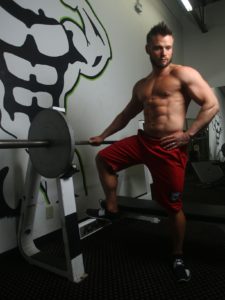I don’t know about you, but when I have a really good workout my body will let me know about it days later in the form of muscle soreness. For me this typically happens when I crush legs on a Monday. I feel great. Then Tuesday rolls around and I am really sore. I can’t walk right. Then Wednesday decides to rear its ugly head and I feel like I need a wheelchair to get around. But why? Why do I hurt? This was an answer I needed to find out for myself.
What Causes Muscle Soreness?
For a long time, the common acceptance of muscle soreness was due to an accumulation of lactic acid in your muscles. Lactic acid is produced when your muscles lack oxygen therefore your body breaks down carbohydrates and forms lactic acid instead of water and carbon dioxide. Lactic acid is typically produced during strenuous physical activity, like lifting heavy ass weights.[/vc_column_text][vc_row_inner equal_height=”yes” content_placement=”middle” column_margin=”default” text_align=”left”][vc_column_inner column_padding=”no-extra-padding” column_padding_position=”all” background_color_opacity=”1″ background_hover_color_opacity=”1″ column_shadow=”none” column_border_radius=”none” column_link_target=”_self” width=”1/2″ tablet_width_inherit=”default” column_border_width=”none” column_border_style=”solid” bg_image_animation=”none”][vc_column_text]
Lactic acid does contribute to muscle soreness. When your muscles accumulate lactic acid due to low oxygen levels it can irritate your muscles and cause pain and discomfort. This would explain the pain you feel after a great workout but only for up to a day. Studies show that lactic acid is removed from your body within a few hours of your workout. So why am I still sore on Thursday from Monday’s workout?
Delayed Onset Muscle Soreness
Delayed onset muscle soreness (DOMS) explains why we as bodybuilders and weight lifters feel the pain of a good workout days later. To fully understand how DOMS works you need to understand what happens to your body during strenuous activity such as weight lifting.
Lifting weight to cause your body to grow is a whole process. When you lift heavy weights you are creating micro-tears in your muscle fibers. This is a good thing. You grow when your body repairs these micro-tears and adapts to better handle the situation next time (this is known as hypertrophy). The process of repairing the micro-tears in your muscle fibers causes DOMS.[/vc_column_text][vc_row_inner equal_height=”yes” content_placement=”middle” column_margin=”default” text_align=”left”][vc_column_inner column_padding=”no-extra-padding” column_padding_position=”all” background_color_opacity=”1″ background_hover_color_opacity=”1″ column_shadow=”none” column_border_radius=”none” column_link_target=”_self” width=”1/2″ tablet_width_inherit=”default” column_border_width=”none” column_border_style=”solid” bg_image_animation=”none”][vc_column_text]Delayed onset muscle soreness occurs when your muscles swell due to an increase amount of white blood cells, prostaglandins, and other nutrients, fluids and supplements you take to repair damaged muscle tissue. This swelling of your muscles and the inflammation can build up for days after a workout. Your muscles swell up to the point that they signal your body’s pain receptors to tell your brain you are in pain. This is nothing to be scared about, it just means you kicked some major ass in the gym.
The muscle soreness you are experiencing days after a workout will go away eventually. It typically can take 3-5 days for the swelling to go down and the inflammation to go away. This is when you start to normalize.[/vc_column_text][/vc_column_inner][vc_column_inner column_padding=”no-extra-padding” column_padding_position=”all” background_color_opacity=”1″ background_hover_color_opacity=”1″ column_shadow=”none” column_border_radius=”none” column_link_target=”_self” width=”1/2″ tablet_width_inherit=”default” column_border_width=”none” column_border_style=”solid” bg_image_animation=”none”][image_with_animation image_url=”3421″ alignment=”center” animation=”Fade In” border_radius=”none” box_shadow=”none” max_width=”100%”][/vc_column_inner][/vc_row_inner][vc_column_text css=”.vc_custom_1509578933479{padding-bottom: 24px !important;}”]
Preventing Delayed Onset Muscle Soreness
[/vc_column_text][vc_row_inner equal_height=”yes” content_placement=”middle” column_margin=”default” text_align=”left”][vc_column_inner column_padding=”no-extra-padding” column_padding_position=”all” background_color_opacity=”1″ background_hover_color_opacity=”1″ column_shadow=”none” column_border_radius=”none” column_link_target=”_self” width=”1/2″ tablet_width_inherit=”default” column_border_width=”none” column_border_style=”solid” bg_image_animation=”none”][vc_column_text]Numerous studies have been conducted on how to prevent delayed onset muscle soreness. The biggest hypothesis tested was pre-workout stretching. Numerous studies conducted on this topic shows no significant difference between individuals who stretch before exercise and those who don’t. A pre-workout warm up, such as biking for 5 minutes, has not been show to prevent DOMS either, but there is evidence to support that it does reduce muscle inflammation.Recent studies suggest that post-workout stretching can help prevent delayed onset muscle soreness. This includes stretching immediately after workout and throughout the hours after the workout. There has not been, to my knowledge, a concrete finding on this that it does in fact work.[/vc_column_text][/vc_column_inner][vc_column_inner column_padding=”no-extra-padding” column_padding_position=”all” background_color_opacity=”1″ background_hover_color_opacity=”1″ column_shadow=”none” column_border_radius=”none” column_link_target=”_self” width=”1/2″ tablet_width_inherit=”default” column_border_width=”none” column_border_style=”solid” bg_image_animation=”none”][image_with_animation image_url=”3422″ alignment=”center” animation=”Fade In” border_radius=”none” box_shadow=”none” max_width=”100%”][/vc_column_inner][/vc_row_inner][vc_column_text css=”.vc_custom_1509579014426{padding-bottom: 24px !important;}”]Preventing delayed onset muscle soreness may not be possible at all. After all, you are the one creating the micro-tears in your muscle fibers. Stretching does not repair them. Foam rolling does not repair them (see more on this later). Your body needs to work naturally to repair them and part of that includes bringing the proper amount of white blood cells, nutrients, fluids and prostaglandins needed to complete that process.
Treating Delayed Onset Muscle Soreness
Just because you are feeling sore days after a workout do not run to your medicine cabinet and pop Iburprofen or some other anti-inflammatory. Yes, it hurts, but you have to embrace it. Your body is growing (although DOMS is not a prerequisite to grow). There are other remedies to DOMS that you can do naturally that does not involve popping pills.[/vc_column_text][vc_row_inner column_margin=”default” text_align=”left”][vc_column_inner column_padding=”no-extra-padding” column_padding_position=”all” background_color_opacity=”1″ background_hover_color_opacity=”1″ column_shadow=”none” column_border_radius=”none” column_link_target=”_self” width=”2/3″ tablet_width_inherit=”default” column_border_width=”none” column_border_style=”solid” bg_image_animation=”none”][vc_column_text]A preferred choice among athletes is to have a professional massage done on the sore muscles. Numerous studies have shown the benefits of massage to muscle soreness. The massage essentially removes some of the fluid in your muscles causing the swelling. This will then relax your muscle more from pressing on your pain receptors. A massage can be done right after a workout or when needed. The sooner the better.[/vc_column_text][/vc_column_inner][vc_column_inner column_padding=”no-extra-padding” column_padding_position=”all” background_color_opacity=”1″ background_hover_color_opacity=”1″ column_shadow=”none” column_border_radius=”none” column_link_target=”_self” width=”1/3″ tablet_width_inherit=”default” column_border_width=”none” column_border_style=”solid” bg_image_animation=”none”][image_with_animation image_url=”3423″ alignment=”center” animation=”Fade In” border_radius=”none” box_shadow=”none” max_width=”100%”][/vc_column_inner][/vc_row_inner][vc_row_inner column_margin=”default” text_align=”left”][vc_column_inner column_padding=”no-extra-padding” column_padding_position=”all” background_color_opacity=”1″ background_hover_color_opacity=”1″ column_shadow=”none” column_border_radius=”none” column_link_target=”_self” width=”2/3″ tablet_width_inherit=”default” column_border_width=”none” column_border_style=”solid” bg_image_animation=”none”][vc_column_text]The other choice, and a more popular one, is to foam roll after your workout. Most people will wait until they feel the soreness of the swelling muscles before they foam roll. I am at fault of this. You can foam roll right after your workout or whenever you feel the pain of the muscle soreness. You may recall earlier I said foam rolling does not repair muscle fibers. It doesn’t. Just the same as a massage, the foam roller “rolls” out the fluid and helps relax the muscle taking pressure off those pain receptors in your body.[/vc_column_text][/vc_column_inner][vc_column_inner column_padding=”no-extra-padding” column_padding_position=”all” centered_text=”true” background_color_opacity=”1″ background_hover_color_opacity=”1″ column_shadow=”none” column_border_radius=”none” column_link_target=”_self” width=”1/3″ tablet_width_inherit=”default” column_border_width=”none” column_border_style=”solid” bg_image_animation=”none”][image_with_animation image_url=”3424″ alignment=”center” animation=”Fade In” border_radius=”none” box_shadow=”none” max_width=”100%”][/vc_column_inner][/vc_row_inner][vc_column_text css=”.vc_custom_1509579177050{padding-bottom: 24px !important;}”]
Muscle Recovery Supplements
There are several categories of supplements you can take to help speed up your body’s muscle recovery. Speeding up your muscle recovery can help shorten your delayed onset muscle soreness time. The four most popular products are branched chain amino acids (BCAAS), glutamine, carbohydrates, and protein.[/vc_column_text][vc_row_inner column_margin=”default” text_align=”left”][vc_column_inner column_padding=”no-extra-padding” column_padding_position=”all” background_color_opacity=”1″ background_hover_color_opacity=”1″ column_shadow=”none” column_border_radius=”none” column_link_target=”_self” width=”2/3″ tablet_width_inherit=”default” column_border_width=”none” column_border_style=”solid” bg_image_animation=”none”][vc_column_text]
Amino Acids
Branched chain amino acids are a very popular category of supplements that help speed up protein synthesis. BCAAs refers to three amino acids: leucine, isoleucine, and valine. Leucine, the most beneficial of the three, is the main amino acid responsible for speeding up protein synthesis which is essentially repairing your micro-tears in your muscle fibers. Isoleucine and valine are converted to glucose and serve as an important energy source during exercise to help fight off fatigue during your workouts.[/vc_column_text][/vc_column_inner][vc_column_inner column_padding=”no-extra-padding” column_padding_position=”all” centered_text=”true” background_color_opacity=”1″ background_hover_color_opacity=”1″ column_shadow=”none” column_border_radius=”none” column_link_target=”_self” width=”1/3″ tablet_width_inherit=”default” column_border_width=”none” column_border_style=”solid” bg_image_animation=”none”][image_with_animation image_url=”3425″ alignment=”center” animation=”Fade In” border_radius=”none” box_shadow=”none” max_width=”100%”][/vc_column_inner][/vc_row_inner][vc_row_inner column_margin=”default” text_align=”left”][vc_column_inner column_padding=”no-extra-padding” column_padding_position=”all” background_color_opacity=”1″ background_hover_color_opacity=”1″ column_shadow=”none” column_border_radius=”none” column_link_target=”_self” width=”2/3″ tablet_width_inherit=”default” column_border_width=”none” column_border_style=”solid” bg_image_animation=”none”][vc_column_text]
Glutamine
Gluatmine is a commodity supplement that helps aid in muscle recovery by speeding up protein synthesis. During intense workouts you “burn” your glutamine tanks. Glutamine is needed for muscle recovery. By supplementing with glutamine you will restore your body’s glutamine levels to normal. Without supplementing with glutamine it could take your body up to five days to replenish these levels. Glutamine has also been shown to increase recovery from injuries and burns. Glutamine is found in some whey proteins, but it is best to supplement with it by itself.[/vc_column_text][/vc_column_inner][vc_column_inner column_padding=”no-extra-padding” column_padding_position=”all” centered_text=”true” background_color_opacity=”1″ background_hover_color_opacity=”1″ column_shadow=”none” column_border_radius=”none” column_link_target=”_self” width=”1/3″ tablet_width_inherit=”default” column_border_width=”none” column_border_style=”solid” bg_image_animation=”none”][image_with_animation image_url=”3426″ alignment=”center” animation=”Fade In” border_radius=”none” box_shadow=”none” max_width=”100%”][/vc_column_inner][/vc_row_inner][vc_row_inner column_margin=”default” text_align=”left”][vc_column_inner column_padding=”no-extra-padding” column_padding_position=”all” background_color_opacity=”1″ background_hover_color_opacity=”1″ column_shadow=”none” column_border_radius=”none” column_link_target=”_self” width=”2/3″ tablet_width_inherit=”default” column_border_width=”none” column_border_style=”solid” bg_image_animation=”none”][vc_column_text]
Carbohydrate Supplements
Post-workout carbohydrates can also help reduce the time of your delayed onset muscle soreness. Post-workout carbs will help replenish your glycogen levels in your muscles. It will also increase your body’s insulin levels which will help carry much-needed nutrients to your muscles aiding in recovery. There are many post-workout carbs on the market but you want something that will be fast digesting to be absorbed quickly. You also want something that will not result in bloating (no one wants to look fat, obviously).[/vc_column_text][/vc_column_inner][vc_column_inner column_padding=”no-extra-padding” column_padding_position=”all” centered_text=”true” background_color_opacity=”1″ background_hover_color_opacity=”1″ column_shadow=”none” column_border_radius=”none” column_link_target=”_self” width=”1/3″ tablet_width_inherit=”default” column_border_width=”none” column_border_style=”solid” bg_image_animation=”none”][image_with_animation image_url=”3427″ alignment=”center” animation=”Fade In” border_radius=”none” box_shadow=”none” max_width=”100%”][/vc_column_inner][/vc_row_inner][vc_row_inner column_margin=”default” text_align=”left”][vc_column_inner column_padding=”no-extra-padding” column_padding_position=”all” background_color_opacity=”1″ background_hover_color_opacity=”1″ column_shadow=”none” column_border_radius=”none” column_link_target=”_self” width=”2/3″ tablet_width_inherit=”default” column_border_width=”none” column_border_style=”solid” bg_image_animation=”none”][vc_column_text]
Protein
The most common of supplements to take post-workout is whey protein. Whey protein is the fastest absorbing protein on the market. The major benefit of whey protein is that it aids in protein synthesis. Your body needs protein to repair the damaged tissue you caused during your intense workout. By ingesting whey protein immediately after your workout you can start your muscle recovery immediately, thus helping to reduce the time period of your DOMS. Whey protein also helps with muscle building if your key goal is growth. This is an essential in your supplement closet.[/vc_column_text][/vc_column_inner][vc_column_inner column_padding=”no-extra-padding” column_padding_position=”all” centered_text=”true” background_color_opacity=”1″ background_hover_color_opacity=”1″ column_shadow=”none” column_border_radius=”none” column_link_target=”_self” width=”1/3″ tablet_width_inherit=”default” column_border_width=”none” column_border_style=”solid” bg_image_animation=”none”][image_with_animation image_url=”3137″ alignment=”center” animation=”Fade In” border_radius=”none” box_shadow=”none” max_width=”100%”][/vc_column_inner][/vc_row_inner][vc_column_text]
Takeaway
Delayed onset muscle soreness sucks. It really does. For me it takes several days to feel “normal” again. The one thing you need to keep in mind is that if you are that sore then your body should be doing its job to ensure you are growing. As I mentioned earlier DOMS is not a prerequisite for growth but it does promote it.
There are several things you can do immediately post workout to help reduce your DOMS period. You can either get a massage or foam roll. You can also supplement with BCAAs, glutamine, carbohydrates and/or whey protein to help speed the muscle recovery process. This, in turn, can reduce the time period that you are suffering from DOMS.
So the next time you feel you cannot walk because of that epic leg day do not rush to judgment that you are dying. Do not call your doctor. Do not pop pill. Foam roll, drink those aminos and think about the glorious gains you are making.[/vc_column_text][/vc_column][/vc_row]





